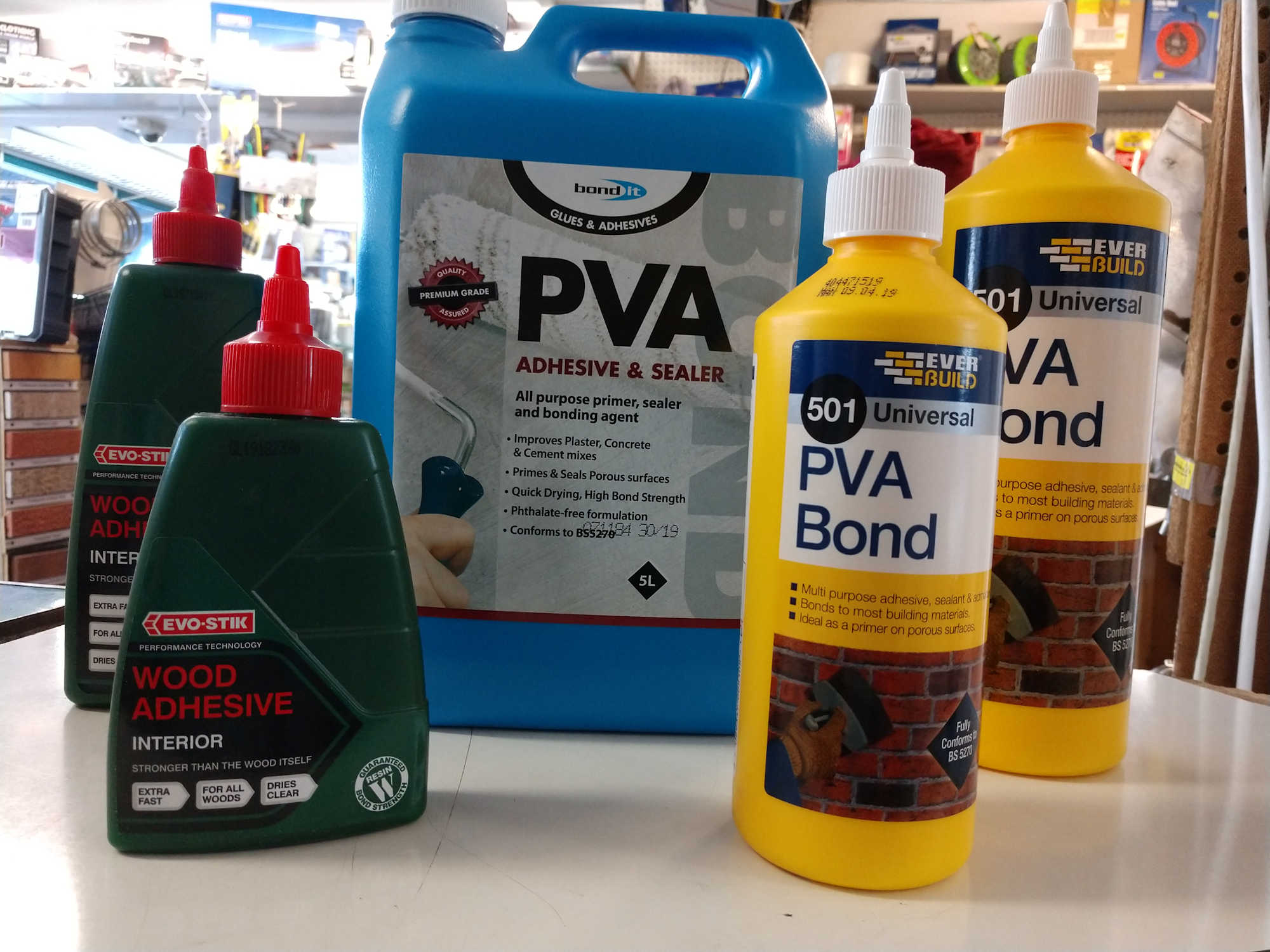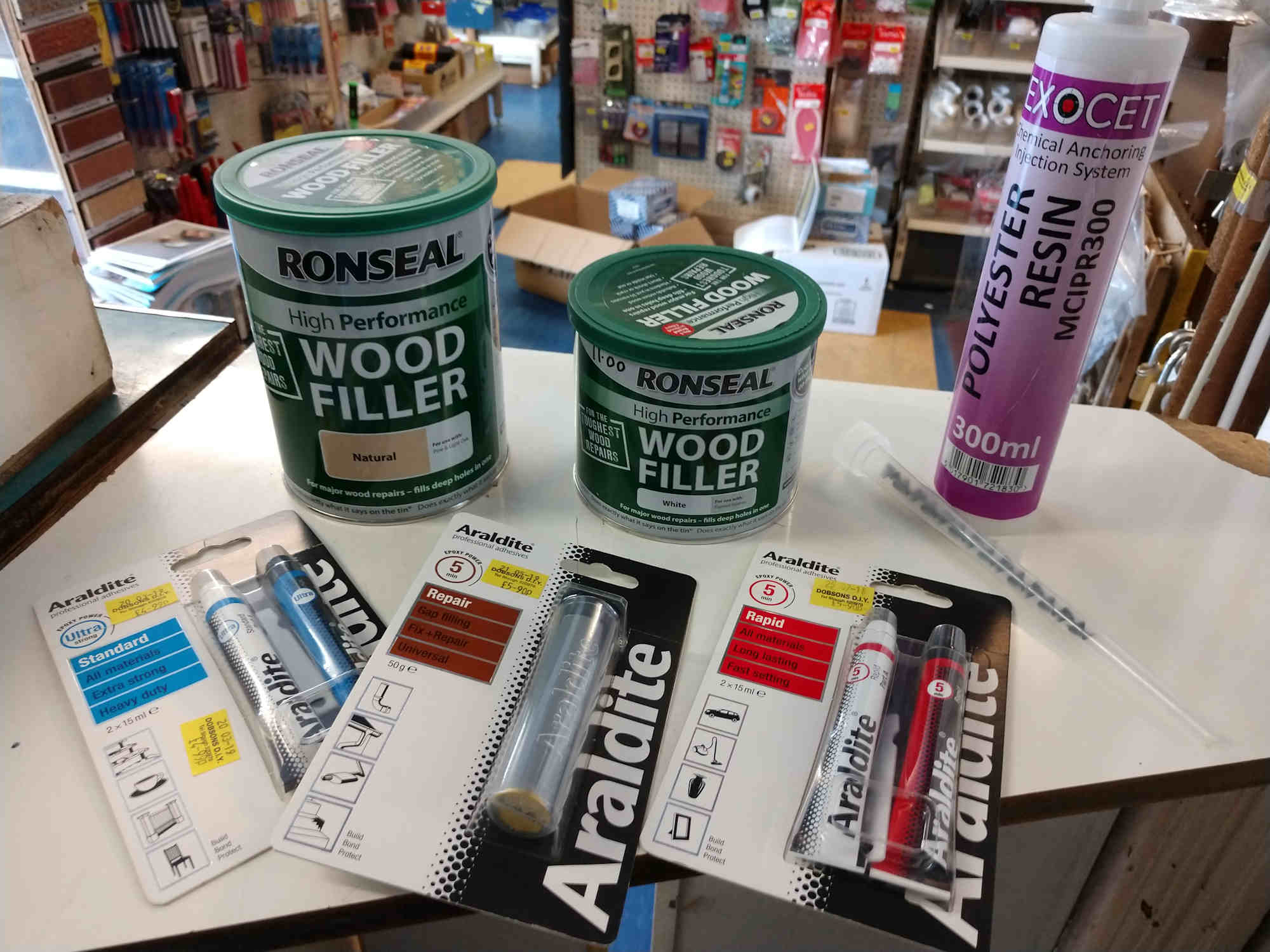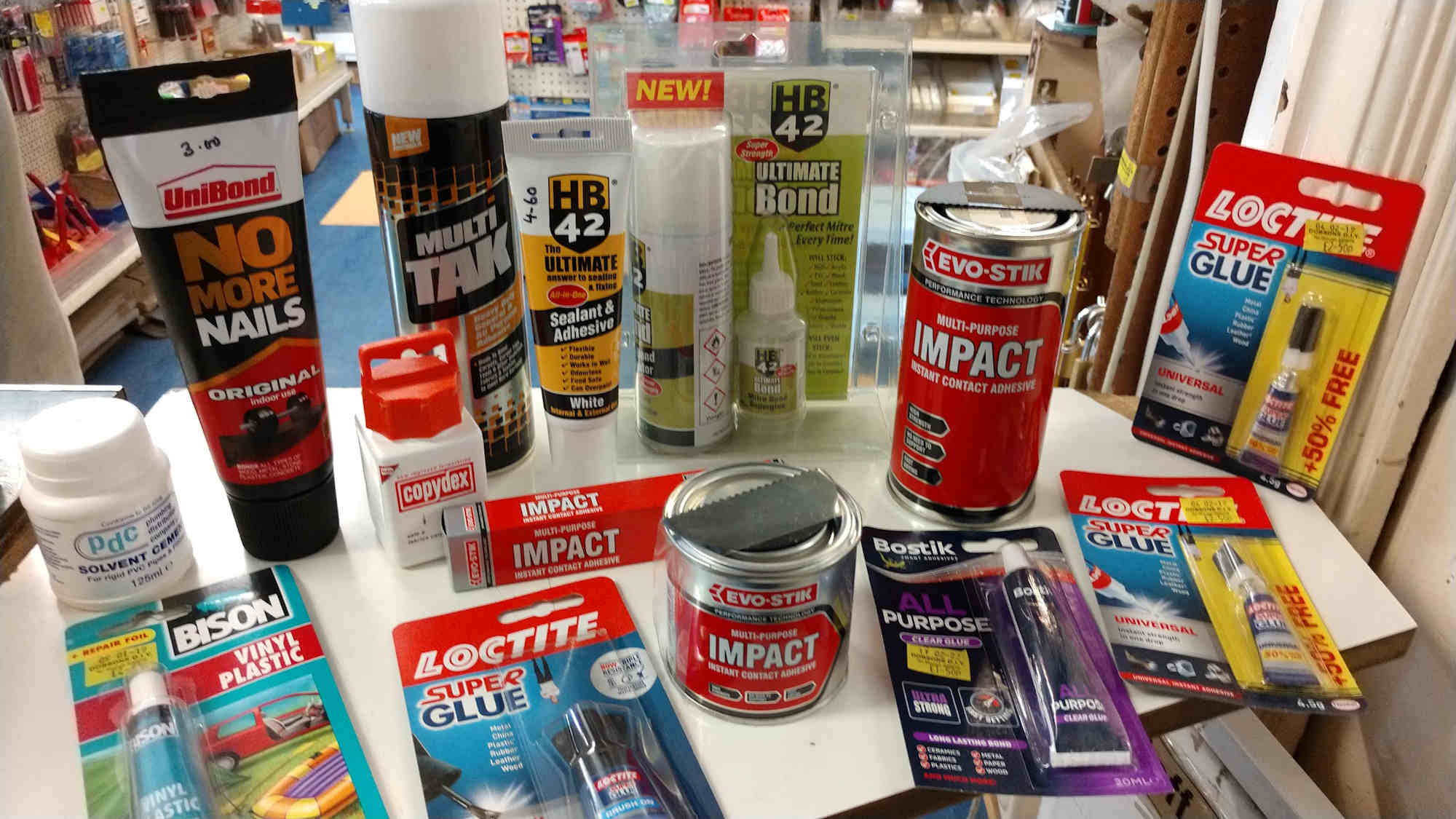All Things Glue
From a woodworking background I've come across a variety of adhesives, some of which are to a extent out of fashion or at least we don't stock them. Cascamite was the mainstay of the woodworking world and was a great glue restoring and construction but they changed the formula and that killed off it's sales entirely. A shame really as it was possible to mix it to whatever thickness one liked. It's still available on ebay but I wouldn't recommend it. glue guns have also lost their popularity and we don't even stock one these days. Oddly we do still have a box of Pearl glue, I suspect most people would have no idea what that is. I've never had any inclination to try using it. Practically all the furniture up to the 1940's would have been made with Pearl Glue, animal resin.
PVA
PVA is the most common glue for woodwork. I've stools, boxes and shelves made 20 or 30 years ago and they are still in one piece, the glue holds. What it does require however is clean bare wood and a tight fit or clamping. Traditionally Dobsons is a Timber yard and was geared towards carpentry. Nowadays it's more of a builders merchants and the PVA tends to be sold in 5 litre containers to builders to add to cement or prepare walls. Woodworkers prefer the Evo Stik branded version and builders prefer the cheap and cheerful generic packaging.
PU Foam and Adhesive Products
Below in the picture are all PU in one form or another plus I've included the PU cleaner. The low expansion foam requires a gun and cleaner which makes it an expensive option for the average consumer. It's primarily sold as a new method to hang plasterboard but going by shop sales that hadn't caught on. I think it's a product with far wider potential, there are some YouTube videos about it. There are two sizes of the Ever Build expanding foam. It comes with it's own applicator gun and this makes it as popular with tradesmen and DIYers alike. We only do a small Gorilla glue. Best to wear gloves with the Gorilla glue .. as it expands it tends to go all over the place
Epoxy Resin and Polyester Resin
Mostly I use what is known as slow cure epoxy resin which I came across in a veneer factory in the 90's. it's widely used in ship building and aeroplane construction. We just stock the small 2 x 15 ml Araldite Standard which has around a half hour usage time and it's usually an idea which this glue and many others to leave the work it to go of overnight. The slow cure gives plenty of time to put a chair or table back together. A blob of it will stick one thing to another without clamping or a tight fit. For me the long cure time and guaranteed outcome are most appealing, especially for some of my structural fretwork. Since it's used to manufacture boats obviously it is entirely water-resistant / good for outside. I've used it a few times to repair garden benches. Something to remember is not to mix twice as much as you need !
The slow cure epoxy I have used when employed as a restorer but mostly I wouldn't as I prefer to spend a few minutes mixing resin. It needs to change colour and consistency as an indicator that it is properly mixed. So with the fast cure one has to be super quick. Microfibres can be added to epoxy resin, these are fine cotton fibres which thicken up the resin as desired. This mixture has a few applications, as filler perhaps and joints that may be a little loose. A small wooden peg / dowel also helps with a loose joint.
Epoxy putty and Wood Filler
Epoxy Putty is somewhat specialist, perhaps boat repairs or outside woodwork but it says it sticks to most things on the packet. It also has a variety of craft applications as far as I can tell. Mix the two sticks together and it goes off very hard.
Two Pack Wood Filler is one of the most common uses of epoxy for decorators or carpentry. We sell more of the white Ronseal so I guess that's for doors and door frames. For woodwork it's an idea to buya light or medium brown and add stain or paint powder. A fractional amount of hardener to filler is required. We also sell a tube of extra hardener for £2.
Polyester Resin Chemical Anchor
Fairly self explanatory this is a two part resin again only made from polyester. I have no idea what the difference is as in larger quantities it looks exactly the same as epoxy. This gun dispenser is often used for fixing the bolts fixing up chimney brackets. It is also possible to buy specialist perforated plugs. Also a good way to hang gates.. The two parts of the resin are mixed in a spiral system in the nozzle.
Super Glue, Impact Adhesive and Other Adhesives
We have a few types of super glue, two in a tube and one with a bottle and small brush. HB42 Ultimate Bond is also a super glue but two parts, the spray is the activator to the super glue in the bottle. It's a very popular glue across the trades. We stock the more traditional impact adhesives in liquid and tube form as well as a reasonably priced Multi Tak spray can. In the photo we have No Nails squeezy tube, this would be considered in part a gap filling glue since it is fairly thick but I'm not sure what it's adhesive properties are. A newer adhesive in a similar vein to Gripfill and No Nails is the HB42, it's an excellent glue for many applications. Lastly we have Copydex, often used for crafts and in particular braid such as around the bottom of a stool or chair. We have the Bostick all purpose glue, again mostly for craftwork and two glues suitable for plastics, the Bison Vinyl and Plastic in a tube and the plumbing solvent cement which is mostly used for pipes and plumbing obviously but could have a number of applications including say model aircraft for example.



